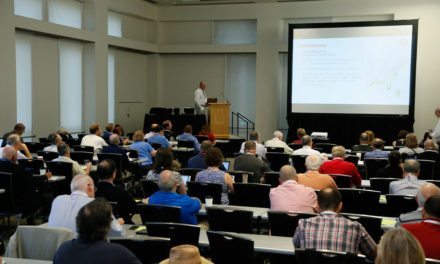Washington, D.C. – (June 1, 2017) – Statement from Mahesh Ramanujam, president & CEO, USGBC and GBCI
As many know, the Paris Agreement, under the UN Framework Convention on Climate Change (UNFCCC), establishes voluntary actions to address greenhouse gas emissions and global climate change mitigation and adaptation—and 194 countries around the world are signatories. The United States government has an opportunity to lead on this, and in so doing, to strengthen global partnerships, yet it has chosen to walk away. We are deeply disappointed to learn of the administration’s decision to withdraw from the historic Paris Agreement today.
We are facing an important crossroads and America must keep building. We need to keep building bridges and bonds and breaking barriers in the push for a sustainable future for all. While the pullout of the U.S. government from the Paris Agreement will be felt across the world, the surge of climate commitments and actions by the private sector, NGO’s, governments, cities and states, will only serve to strengthen the green building movement and keep pushing us forward.
For 24 years, USGBC has led the green building movement with a strong vision – that buildings, communities and cities will regenerate and sustain the health and vitality of all life within this generation. Today, our efforts continue unabated and with stronger than ever commitment and hope.
Yes, hope. We are hopeful for the future because we know that our movement is a community of 13 million strong and growing. We are encouraged by their continued commitment to build a sustainable future for all.
U.S. companies, including many USGBC members, are already working to address business risks from climate change and to adapt their businesses to domestic and global opportunities created around climate-mitigation needs. Businesses and local governments are wisely seeking and investing in low-carbon fuels and technologies to stay on the cutting edge of the global economy. And with platforms like Arc, more and more companies and government entities are tracking their carbon emissions, committing to reduction targets, and taking action.
Right now, business as usual is no longer an option. With the work of our organization, our members, our volunteers and many others, we have reached the point where the transition to a low-carbon economy is inevitable; but remains urgent.
And all around us we see that there are new leaders who are ready to rise, inspired by the promise of a brighter future for our children and for generations to come. They are the big corporations and small business owners, educators and innovators, scientists and activists, non-profit employees and policy makers, advocates and so many more who are working every day to change our world, definitively, for the better. To these leaders, green building is the key solution to pushing our built environment to be supportive and restorative of all life.


